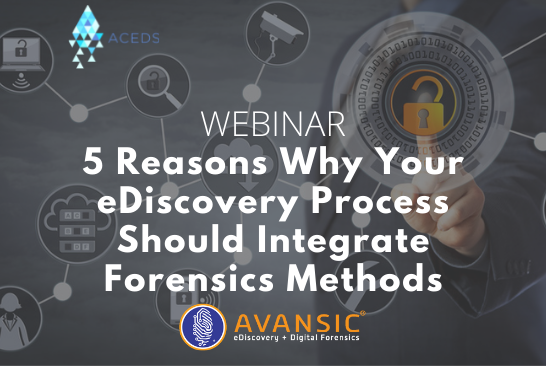5 Reasons Why Your eDiscovery Process Should Integrate Forensics Methods - ACEDS Webinar

Watch Now
eDiscovery and forensics share the goal of locating digital evidence to support the facts of an investigation or discovery. While eDiscovery is content-based, forensics is more dependent on context. However, there are forensic techniques you can integrate into everyday eDiscovery processing to improve efficiency and accuracy.
eDiscovery tools have adopted forensics methods such as hashing, de-duplication, removal of known files, and more. And there are additional lessons to be learned in the preservation and collection of data.
The presenters discuss all of the above, as well as integrating disparate data from multiple sources (which is common in forensic investigations), including cell phone data, timelines, and file artifacts. Metadata is handled differently in these two processes, as is the ability to identify sensitive information automatically. The panel also discusses cases where digital forensics techniques used during eDiscovery helped with document authentication.
Presenters:Craig D. Ball, P.C. - Trial Lawyer, Technologist, Computer Forensic Examiner
Gavin W. Manes, Ph.D. - CEO, Avansic

Additional Upcoming Events
Cool Things Digital Forensics Can Do: Applications in Civil Litigation
Watch Now
This presentation covers some of the capabilities of digital forensics - how forensics...
Digital Forensics Saves the Day – Top Cases in Review
Watch Now
A digital forensics investigation can make an impactful difference in an otherwise...
Reinventing Professionals Interview - Approaching Self-Service eDiscovery
How Legal Teams are Approaching Self-Service eDiscovery
Ari Kaplan spoke with Dr. Gavin...

